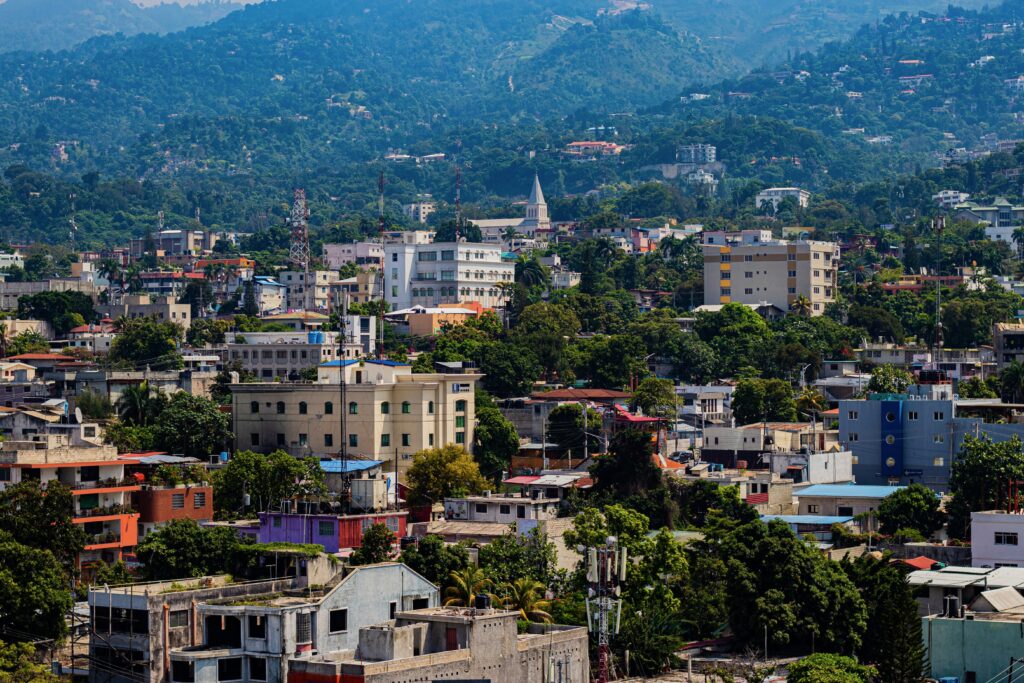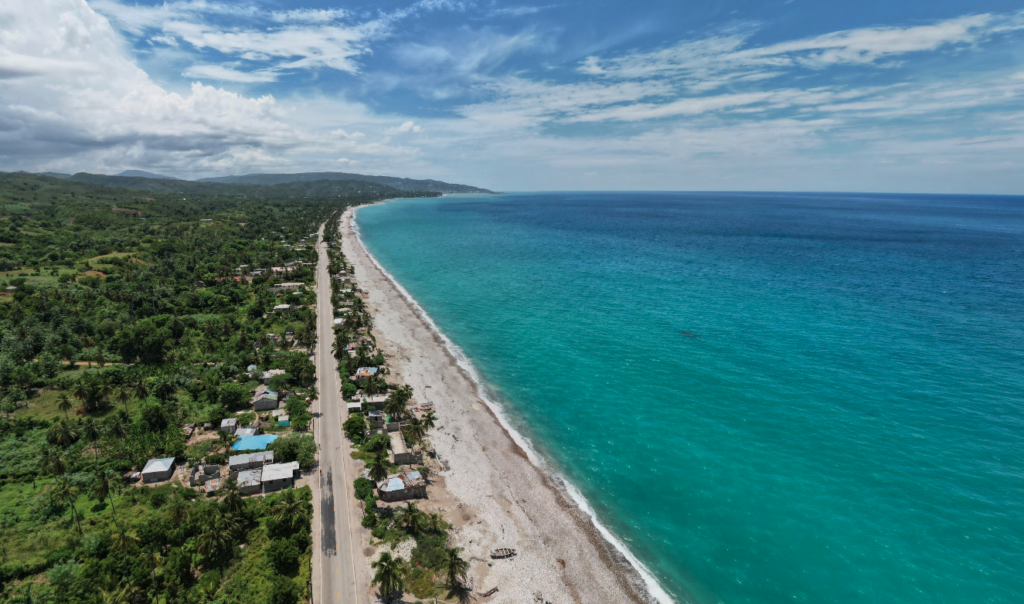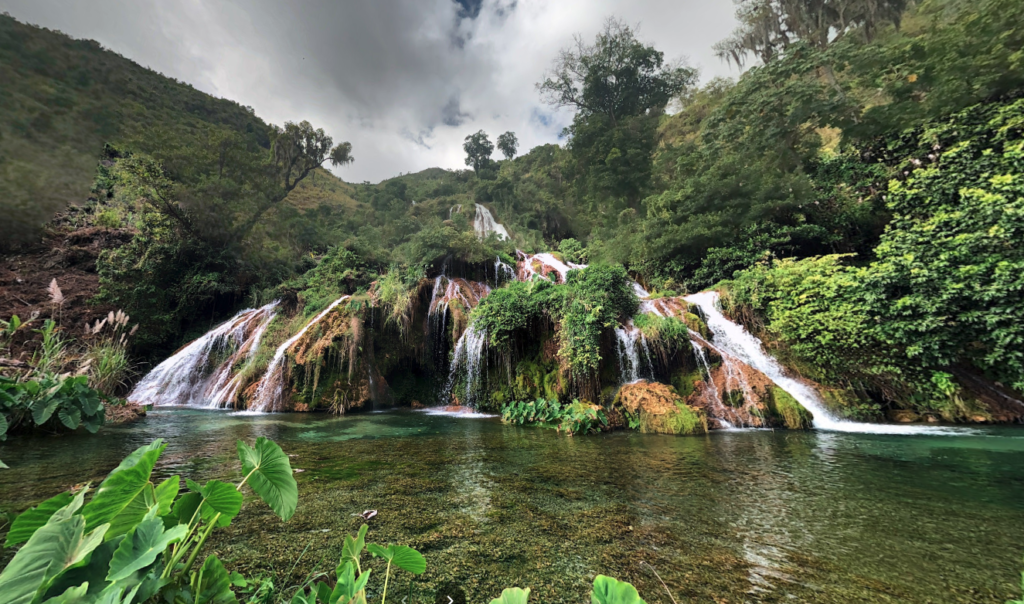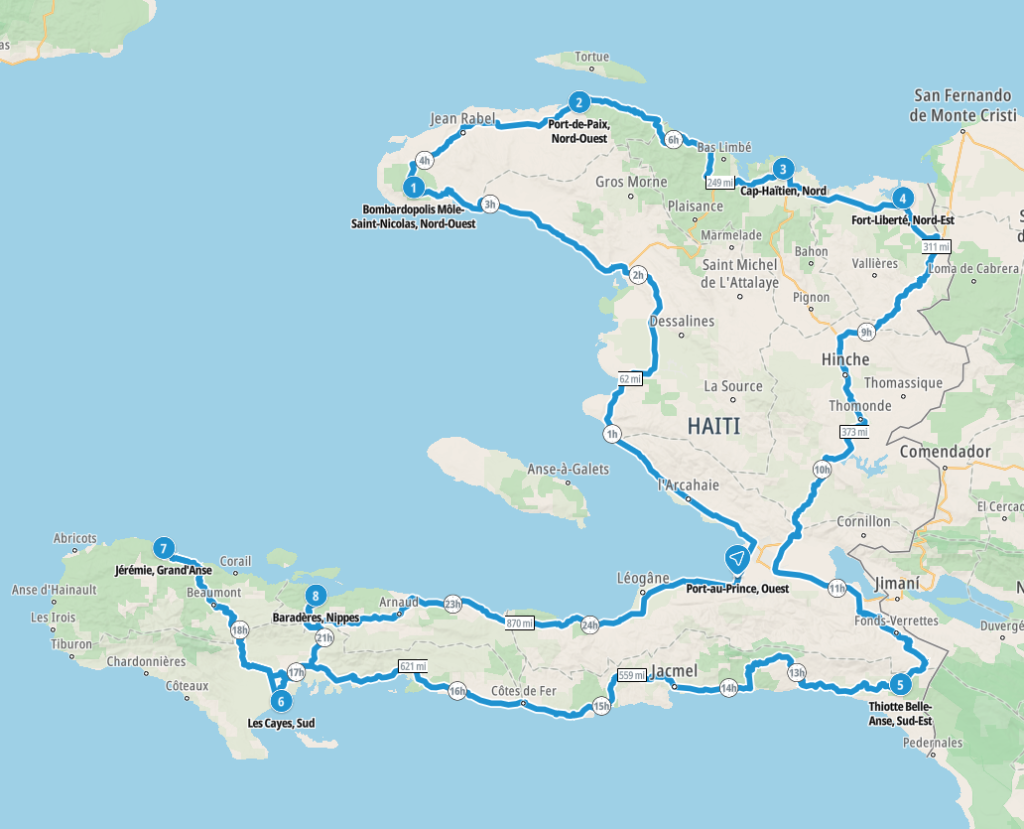Haiti / Republic of Haiti / République d’Haïti / Repiblik d Ayiti – Let’s explore here

What’s it like in Haiti?
Haiti is located on the island of Hispaniola, in the Caribbean Sea in North America, which it shares with the Dominican Republic. The country also consists of around 60 much smaller islands, islets and cays. Haiti was the first country in the Americas to officially abolish slavery, and the only country in history established by a slave revolt.
It is the most mountainous country in the Caribbean, with three quarters of the land above 700 ft (210m). The highest point is Pic la Selle, at 8,793 ft (2,680m) above sea level.
Haiti’s population is around 11½ million (2023), about one in five of whom live in the metropolitan area of the capital, Port-au-Prince. It is one of the poorest countries in the Americas (2023).

A bit about the history of Haiti
Pre-Colonial Period
Before European arrival, the island of Hispaniola was inhabited by the Taíno, an indigenous people. They lived in organised communities, growing crops like cassava, maize and tobacco.
Colonial Era
In 1492, Christopher Columbus arrived on Hispaniola, marking the start of Spanish colonisation. The Spanish controlled the island until the French began settling the western part in the 17th century. By 1697, the Treaty of Ryswick formally gave France control of the western third of the island, renaming it Saint-Domingue.
Saint-Domingue: The Sugar Colony
Saint-Domingue became one of the richest colonies in the Caribbean due to its extensive sugar plantations worked by enslaved Africans. By the late 18th century, the colony had a complex social hierarchy consisting of white settlers, free people of colour, and a large enslaved African population.
The Haitian Revolution
The Haitian Revolution began in 1791 as a slave revolt led by figures such as Toussaint L’Ouverture and Jean-Jacques Dessalines. Inspired by the French Revolution and Enlightenment ideals, the enslaved population successfully fought for their freedom. In 1804, Haiti declared independence, making it the first independent black republic and the first nation to abolish slavery.
Post-Independence Struggles
After independence, Haiti faced political instability and economic difficulties. The nation struggled with governance, frequent leadership changes and conflicts. In 1825, Haiti was forced to pay a large indemnity to France in exchange for recognition of its independence, which burdened the nation’s economy.
20th Century and U.S. Occupation
Political instability continued throughout the 20th century. In 1915, the US occupied Haiti, citing instability and concerns over European influence. The occupation lasted until 1934, during which the US built infrastructure but faced significant resistance from Haitians.
Duvalier Dictatorships
From 1957 to 1986, François Duvalier (Papa Doc) and his son Jean-Claude Duvalier (Baby Doc) ruled Haiti as dictators. Their regime was characterised by authoritarian rule, political repression, and the use of the paramilitary group Tonton Macoutes to maintain control.
Post-Duvalier Era
After Jean-Claude Duvalier was ousted in 1986, Haiti experienced continued political turmoil, with frequent changes in leadership and coups. In the 1990s, Jean-Bertrand Aristide, a former priest, was elected president but was overthrown in a coup in 1991. He returned to power in 1994 with the help of international forces.
Recent History
In the 21st century, Haiti has faced severe challenges, including poverty, political instability and natural disasters. The 2010 earthquake devastated the country, leading to widespread destruction and loss of life. Despite international aid and some democratic progress, Haiti remains one of the poorest countries in the Western Hemisphere.

Haiti road trip
Haiti is our 24th planned stop on our Road trip through the islands of the Caribbean. Having explored the the Dominican Republic, our next stop is the Turks and Caicos Islands.
Travelling overland between the islands is quite prohibitive due to the lack of transportation options. Travelling between different island countries via ferry is possible, however, ferries only operate between some islands. Chartering private boats between islands is also possible, although travelling with a car in this way is prohibitive. Flying is another option, although again, flights only operate between some islands.
Map of our road trip through Haiti

This is a map of our planned route around Haiti, starting and ending in the capital, Port-au-Prince.
Weather in Haiti
When is the best time to visit Haiti?
The best time to visit Haiti is from January to March. During these months, the island has 7 – 9 hours of sunshine per day and rainfall of 1.2 – 5.1 inches (30 – 130mm) per month. The temperature ranges from 21 – 32°C (69 – 89°F). Inland however, rainfall is lower, and temperatures up to 10°C lower than the coasts.
When is the worst time to visit Haiti?
The worst time to visit Haiti is from April to November. During these months, the island still has 6 – 8 hours of sunshine per day, however, humidity rises and it rains an average of 2.6 – 8.3 inches (65 – 210mm) per month. The temperature ranges from 23 – 35°C (73 – 95°F). Inland however, rainfall is lower, and temperatures up to 10°C lower than the coasts.
Hurricane Season in the Caribbean
Hurricane season in the Caribbean runs from June 1 to November 30. Storms tend to be more frequent and more severe in the latter half of the season.
Hurricanes are least likely during December, January and February.
Travel in and around Haiti
Ferries to other Caribbean island countries from Haiti
Travelling between Haiti and Puerto Rico
Ferries Del Caribe used to travel between Haiti and Puerto Rico, however the company no longer travels this route (January 2025).
Travelling between Haiti and the Dominican Republic
The land, sea and air borders between the Dominican Republic and Haiti are currently closed (January 2025).
What’s it like to drive in Haiti?
They drive on the right hand side of the road in Haiti. Car hire is available in Haiti and roads are, in the main, quite poor. There are minor roads inland and to bays and coves however that are not maintained and in very poor condition.
We’ve also created a dedicated page to driving abroad, which you might find helpful 🙂
What currency do they use in Haiti?
In Haiti they use the Haitian gourde. Cash is widely used. The use of credit / debit cards is sometimes accepted in major cities, although not in rural areas. Travellers cheques are not accepted in the main. There are ATMs in cities, although not all accept foreign issued cards.
You should make yourself aware of the amount that your bank charges you for using credit and debit cards abroad. Often credit cards are cheaper for purchasing items directly, and for withdrawing cash from ATMs.
What language do they speak in Haiti?
They speak French and Creole in Haiti.
What time zone is Haiti in?
Remember, when you’re planning your next trip to take a look at what time zone it’s in.
Do I need a visa to visit Haiti?
We’ve created a dedicated, more comprehensive page on visas, which you should find helpful. Check it out!
Is wild camping legal in Haiti?
No, wild camping is not widely accepted in Haiti.
What plug / socket type do they use in Haiti?
In Haiti they use plug / socket types A and B.


Health issues in Haiti
Is it safe to drink water in Haiti?
No, it is safe to drink tap water in Haiti. Bottled water is also readily available across the country.
What vaccinations are required for Haiti?
This NHS website is kept up to date with all relevant information on vaccinations in Haiti.
Phones in Haiti
What is the country calling code for Haiti?
The country calling code for Haiti is +509
What are the emergency phone numbers in Haiti?
- The emergency number for police in Haiti is: 114 / 122
- In Haiti, the emergency number for ambulance is: 116
- The emergency number for fire in Haiti is: 115
If you’ve got some useful info that you’d like to share, let us know!
And don’t forget to check out all the other pictures!
